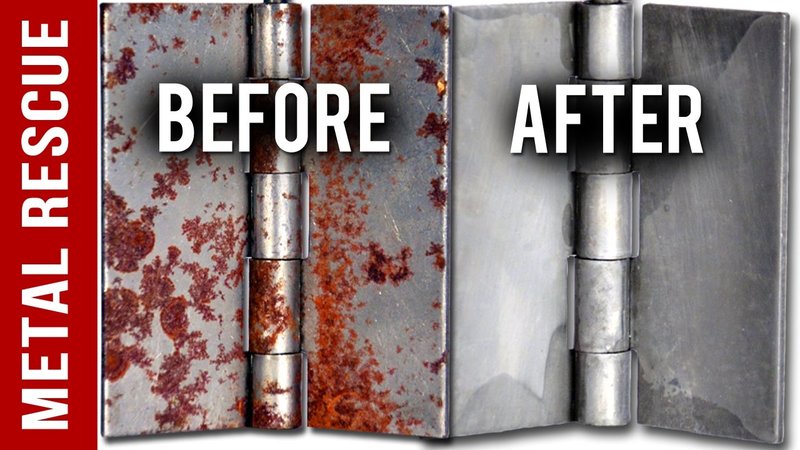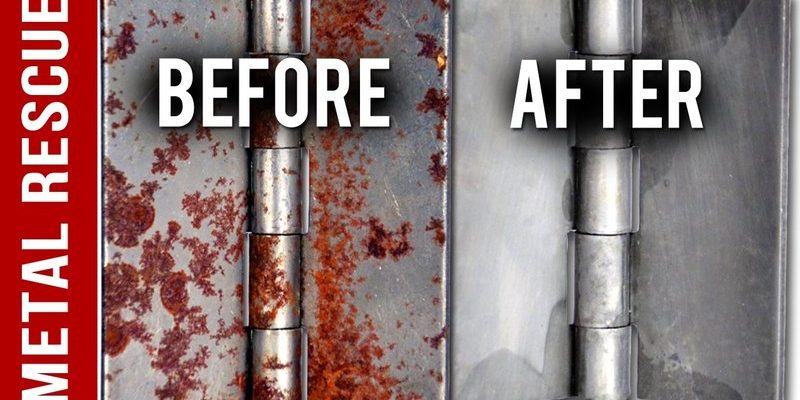
Why does this happen? Most exterior door frames are made to stand up to weather, but door hinges are often made of steel or have steel pins. Over time, a tiny chip in the paint or a bit of moisture can set off a slow, quiet rusting process that seeps out and stains the frame around the hinges. Honestly, it’s like a leaky pen in your pocket: a little trouble in the wrong spot and suddenly it’s everywhere. But here’s the good news—getting rid of these rust stains isn’t rocket science. You just need the right steps, some patience, and a few supplies you probably already have at home.
What Causes Rust Stains Around Door Hinges?
You might be wondering: why do rust stains always seem to show up around hinges, not the rest of the door frame? It comes down to how different materials react to moisture and air. Most exterior frames from brands like Pella or Andersen are made from aluminum or painted steel, which holds up pretty well outside. But the hinges themselves are usually steel or steel-plated. Even if they’re “weather resistant,” they’re still vulnerable to rust if water gets in.
Rust forms when iron reacts with oxygen and moisture, creating that reddish-brown crust. Paint is supposed to protect metal, but all it takes is one scratch or a little wear and tear, and suddenly moisture sneaks in. Over weeks or months, rust creeps out from the hinge and stains the surrounding paint or metal. Sometimes, a door that’s been out in rain, snow, or salty air will show these marks even faster.
Rust stains love to start small—just a hint of orange in the corner. But once they settle in, they can quickly spread and become tough to clean if ignored.
Gathering Supplies: What You’ll Need to Clean Rust Stains
Before you jump into cleaning, it’s smart to have everything ready. The good news? Most of what you’ll need is probably hiding in a cabinet already. For stubborn rust, a few specialty items can give you the upper hand.
- White vinegar (classic household acid for breaking down rust)
- Baking soda (for a gentle, effective scrub)
- An old toothbrush or a soft nylon brush
- Clean rags or paper towels
- Rubber gloves (keeps your hands safe)
- Small bowl or cup (for mixing paste)
- Painter’s tape and plastic sheeting (to protect area around the stains)
- Optional: Commercial rust remover (like WD-40 or CLR), touch-up paint, or a fine steel wool pad for heavy stains
If you have a fancy finish on your door frame—say, powder-coated aluminum or a delicate painted color—skip harsh cleaners or steel wool unless you’re desperate. Those can scratch or discolor the surface, and that’s not the kind of “fix” anyone wants.
Step-By-Step: How To Remove Rust Stains From the Exterior Door Frame
Let’s break down exactly how to clean rust stains from the exterior door frame around the hinges. Don’t worry—you don’t need to be a pro. Here’s how I’d walk a friend through it:
- Prepare the area: Start by opening the door wide and securing it, so you have full access to the hinge and frame. Use painter’s tape and plastic sheeting to cover nearby areas you don’t want splashed. You don’t want to accidentally mess up a nice paint job.
- Apply the vinegar: Wearing gloves, soak a clean rag or paper towel with white vinegar and press it directly onto the rust stain. Let it sit for 10–15 minutes. This gives the acid time to break down the rust.
- Scrub gently: After soaking, use a toothbrush or nylon brush to gently scrub the stain in a circular motion. Don’t go wild—a gentle touch usually works best and avoids scratching the surface.
- Make a baking soda paste (if needed): If stains remain, mix a thick paste of baking soda and water. Apply it right to the rust and let it sit for about 20 minutes. Baking soda is mildly abrasive and reacts with the vinegar residue.
- Rinse and check your progress: Wipe away the paste with a damp rag. If necessary, repeat the process. Tougher stains might need a second or even third round.
- Try commercial cleaners as a last resort: If the stain just won’t budge, don’t be afraid to use a commercial rust remover. Always follow the instructions and test in a hidden spot first.
- Dry thoroughly: When you’re done, dry the area well. Moisture is what caused the problem in the first place!
Patience pays off here. The more gentle and thorough you are, the less likely you’ll damage the finish or make things worse.
What If the Rust Keeps Coming Back?
Here’s the thing: sometimes, you clean a rust stain and it just reappears like a stubborn weed a few weeks later. Why? It usually means the rust on the hinge (or even inside the hinge pin) hasn’t been fully dealt with, or moisture is still sneaking in somewhere.
One option is to remove the hinge pins and clean them thoroughly, or even replace the hinges with rust-resistant versions from the original brand, like JELD-WEN or Pella. Many manufacturers now offer stainless steel, brass, or powder-coated hinges that won’t rust as easily. If you’re handy, swapping out hinges is straightforward—just be sure to prop the door or have a friend help.
Another trick is to touch up paint chips or scratches around the hinge area. Use a tiny brush and matching exterior paint to seal up gaps where water might get in. Think of this step as putting on a raincoat before heading out in a storm. It’s all about keeping future trouble at bay.
Alternative Methods For Stubborn or Old Rust Stains
Sometimes, regular vinegar and baking soda just aren’t enough. You might be dealing with stains that are years old, or that have soaked deep into textured aluminum or steel frames. When that happens, it’s time to bring out the bigger guns—but always with a gentle touch.
- Commercial rust removers: Products like WD-40 Specialist Rust Remover or CLR are made for tough stains. Use a cotton swab to target only the rusty area, and rinse thoroughly to keep chemicals off the rest of the frame.
- Fine steel wool or sanding pad: Very gently rub only the stained area, but stop immediately if you notice paint or finish coming off. This method is best for bare metal frames, not painted ones.
- Lemon and salt: For a natural twist, sprinkle salt on the rust, then rub with half a lemon. The acid and abrasion can sometimes work wonders for light stains.
Always test any strong cleaner, abrasive, or technique in a hidden spot first. A little caution now saves you from a patchy, mismatched door frame later.
How To Prevent Rust Stains From Coming Back
Here’s where a little effort up front saves you a ton of trouble later. Once you’ve dealt with rust stains, you’ll want to keep them from coming back—especially if your door frame and hinges have had issues before.
- Keep hinges dry: After heavy rain or cleaning, wipe around the hinges and frame to remove standing water.
- Apply a light oil or silicone spray to hinges: This helps block moisture and slows down rust formation.
- Touch up paint chips immediately: Even tiny scratches can turn into rust magnets.
- Inspect regularly: Every few months, give your door a quick once-over for early signs of rust. It’s much easier to tackle fresh stains than old, deep ones.
- Consider replacing problem hinges: Brands like Andersen, JELD-WEN, and Pella all offer rust-resistant upgrade parts. It’s a smart move if you live in a humid or coastal area.
Honestly, taking five minutes every season to check your hinges is worth it. You’ll spend less time cleaning up later, and your door will look sharp year-round.
Comparing DIY Vs. Professional Rust Removal
DIY cleaning works great for most light to moderate rust stains, especially if you catch them early or the frame is a simple material like steel or aluminum. But there are some cases where it’s worth calling in a pro:
- The stain is widespread or keeps returning.
- The finish is delicate, high-gloss, or part of a custom door assembly.
- You suspect rust has damaged the structure of the hinge or frame.
Some professional services offer deep cleaning, sanding, and repainting—options that go above and beyond what you can do with household supplies. But honestly, for one or two small stains around a hinge, you’ll save money and time by tackling it yourself.
Don’t hesitate to ask the manufacturer about recommended cleaning products or techniques for your specific brand door. Sometimes, using the wrong cleaner can void warranties or cause unexpected issues.
What To Watch For: Common Pitfalls When Cleaning Door Frame Rust
There are a few easy-to-miss mistakes people make that can turn a minor cleaning job into a future headache:
- Scrubbing too hard: Steel wool, abrasive pads, or rough brushes can scratch painted finishes, leaving the door frame worse off than before.
- Using harsh chemicals on the wrong surface: Not all rust removers are safe for all door materials. Always check the label, and when in doubt, use gentler methods first.
- Ignoring paint chips or cracks after cleaning: Unprotected metal will rust again fast. Always seal up your work.
- Forgetting to dry the area: Cleaning with water and then leaving the area damp is basically an invitation for rust to start right back up.
Let me explain: A little patience and a light touch go a long way. It’s better to repeat a mild process than go too strong on the first try.
Closing Thoughts
Getting rid of rust stains from your exterior door frame around the hinges is one of those chores that feels bigger than it really is. Once you know what you’re doing—and have the right supplies—it’s completely manageable. Remember, rust is just metal’s way of telling you it needs a little extra care. Most stains respond well to gentle cleaning, and the steps you take now will keep your door hinges and frame looking sharp for years.
Whether you’re dealing with a brand-new Andersen, Pella, or JELD-WEN door or just trying to keep your trusty old entry looking presentable, a little know-how goes a long way. Stay patient, be gentle, and make touch-ups part of your seasonal routine. Your door (and your home’s curb appeal) will thank you every time you come and go.
